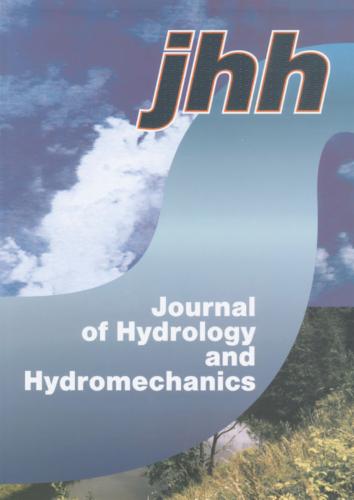
Journal of Hydrology and Hydromechanics
The Journal of Institute of Hydrology SAS Bratislava
Optimized machine learning models for accurate prediction of the discharge coefficient in hydraulic weirs
Design and assessment of sustainable retention ponds for flood reduction in an urban drainage system in Cuba
Utilising land use scenario modeling and machine learning for mitigating drought risks in degraded landscapes
Hydrodynamic effects of porous baskets on scour patterns at elliptical and hexagonal piers
Non-cohesive sediment cleaning patterns and processes upstream of a Type A piano key weir for steady and unsteady flow conditions
JOURNAL OF HYDROLOGY AND HYDROMECHANICS is an international open access journal for the basic disciplines of water sciences. The scope of hydrology is limited to catchment hydrology, vadose zone hydrology and biohydrology, primarily of temperate zone. The hydromechanics covers theoretical, experimental and computational hydraulics and fluid mechanics in various fields, two- and multiphase flows, including non-Newtonian flow, and new frontiers in hydraulics. The journal is published quarterly in English. The types of contribution include: research and review articles, short communications and technical notes. The articles have been thoroughly peer reviewed by international specialists and promoted to researchers working in the same field. Authors do not pay any fees.
Why subscribe and read
- Source of high quality research from Czech Republic and Slovakia, as well as from other parts of the world,
- Designed to facilitate the exchange of ideas between researchers from different countries,
- Excellent articles authored by researchers from all over the world.
Why submit
- Relatively fast, fair and constructive peer-review provided by 2 international specialists (The average review process duration: 151 days in 2015, 169 days in 2016, 177 days in 2017, 140 days in 2018, and 173 days in 2019),
- Extensive promotion of each published article to the researchers working in the same field.
Archiving
Sciendo archives the contents of this journal in Portico - digital long-term preservation service of scholarly books, journals and collections.
Plagiarism Policy
The editorial board is participating in a growing community of Similarity Check System's users in order to ensure that the content published is original and trustworthy. Similarity Check is a medium that allows for comprehensive manuscripts screening, aimed to eliminate plagiarism and provide a high standard and quality peer-review process.